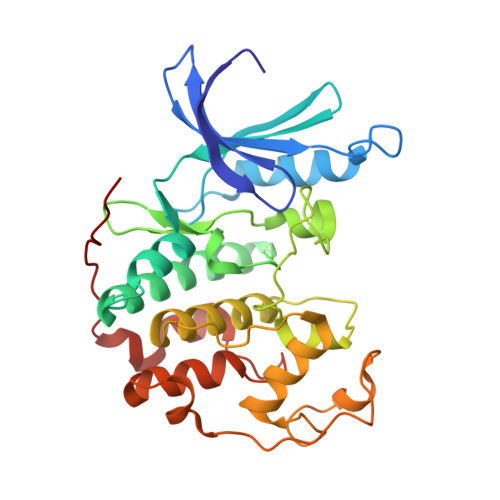Cyclin-dependent kinase inhibitor dinaciclib interacts with the acetyl-lysine recognition site of bromodomains.
Martin, M.P., Olesen, S.H., Georg, G.I., Schonbrunn, E.(2013) ACS Chem Biol 8: 2360-2365
- PubMed: 24007471
- DOI: https://doi.org/10.1021/cb4003283
- Primary Citation of Related Structures:
4KCX, 4KD1 - PubMed Abstract:
Bromodomain-containing proteins are considered atypical kinases, but their potential to interact with kinase inhibitors is unknown. Dinaciclib is a potent inhibitor of cyclin-dependent kinases (CDKs), which recently advanced to Phase III clinical trials for the treatment of leukemia. We determined the crystal structure of dinaciclib in complex with CDK2 at 1.7 ? resolution, revealing an elaborate network of binding interactions in the ATP site, which explains the extraordinary potency and selectivity of this inhibitor. Remarkably, dinaciclib also interacted with the acetyl-lysine recognition site of the bromodomain testis-specific protein BRDT, a member of the BET family of bromodomains. The binding mode of dinaciclib to BRDT at 2.0 ? resolution suggests that general kinase inhibitors ("hinge binders") possess a previously unrecognized potential to act as protein-protein inhibitors of bromodomains. The findings may provide a new structural framework for the design of next-generation bromodomain inhibitors using the vast chemical space of kinase inhibitors.
Organizational Affiliation:
Drug Discovery Department, H. Lee Moffitt Cancer Center and Research Institute , 12902 Magnolia Drive, Tampa, Florida 33612, United States.
















